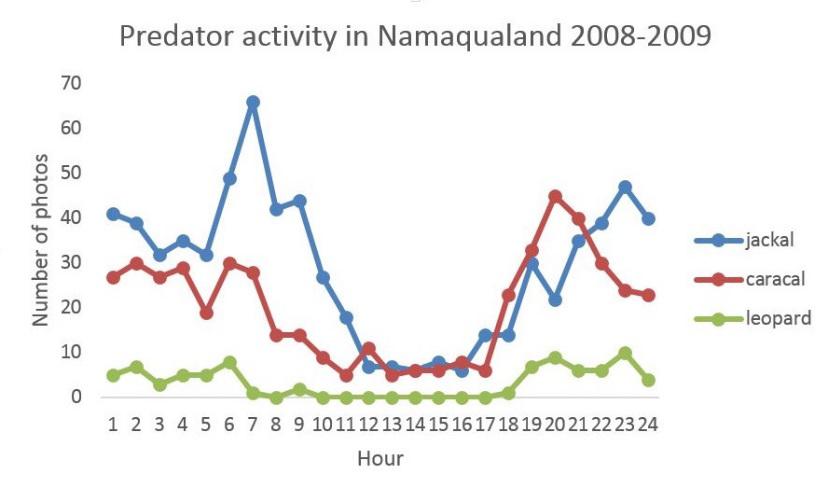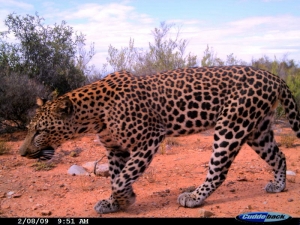Predator Ecology and Co-Existence (PEACE) is a research project that has been long in the making. Bogdan Cristescu, Kristine Teichman and Quinton have been planning the project since 2011. Having recently finished graduate degrees in Canada, Bogdan and Kristine travelled to South African in May this year to help make this project a reality. Following careful consideration of potential study areas, Namaqualand region was identified as ideally suited for a large scale experiment on predator-farmer coexistence. With research permits in place and most funding secured through amazing support from the ABAX Foundation and Woolworths, the team is eager to start fieldwork surrounding and with the Namaqua National Park. Given the large project scope, partnerships are essential. We are happy to acknowledge Conservation South Africa and SANParks who have put in substantial work in getting the project off the ground.
Beyond understanding the behavior of caracal, black-backed jackal and leopard, this research will provide an ecological and economical evidence base for the effectiveness of Eco-Herders and guardian dogs at minimizing predation of small livestock (sheep and goats) by wild predators. Eco-Herders are livestock herders trained to collect ecological data during their patrols using PDAs equipped with Cybertracker Software. Building on multiple years of experience managing Eco-Herders trained by the CLT in Namaqualand, Conservation South Africa will play a vital role in organizing project logistics. Guardian dogs used on the project will be from the Anatolian breed, well suited for deterring predators. The dogs will be provided primarily by the Anatolian Dog Breeding Project run by SANParks.
In December 2013 the team will begin camera trapping at strategic locations to identify where predators are occurring. Camera trapping along with sign of predator presence such as tracks and scat will help us decide on optimal locations to set traps for predator capture. Capturing caracal, black-backed jackal and leopard will allow deployment of GPS radiocollars that enable detailed tracking of predator movements and feeding habits, be it on livestock or wild prey. Bogdan and Kristine have recently learned first-hand that summer in Namaqualand really gives new meaning to the word “hot”. From an animal welfare perspective, trapping must not occur during extremely warm weather to minimize the risk of adverse effects on animals. Based on pilot data on predator activity collected with camera traps in 2008-2009, predators in Namaqualand are active mostly during dark hours, which gives the team hope that they will have good success trapping mostly at night.

We look forward to providing updates as fieldwork progresses and hope to bring news (with photos) of the first caracal being caught in the next few weeks. What better Christmas gift than the first successful predator capture!

















